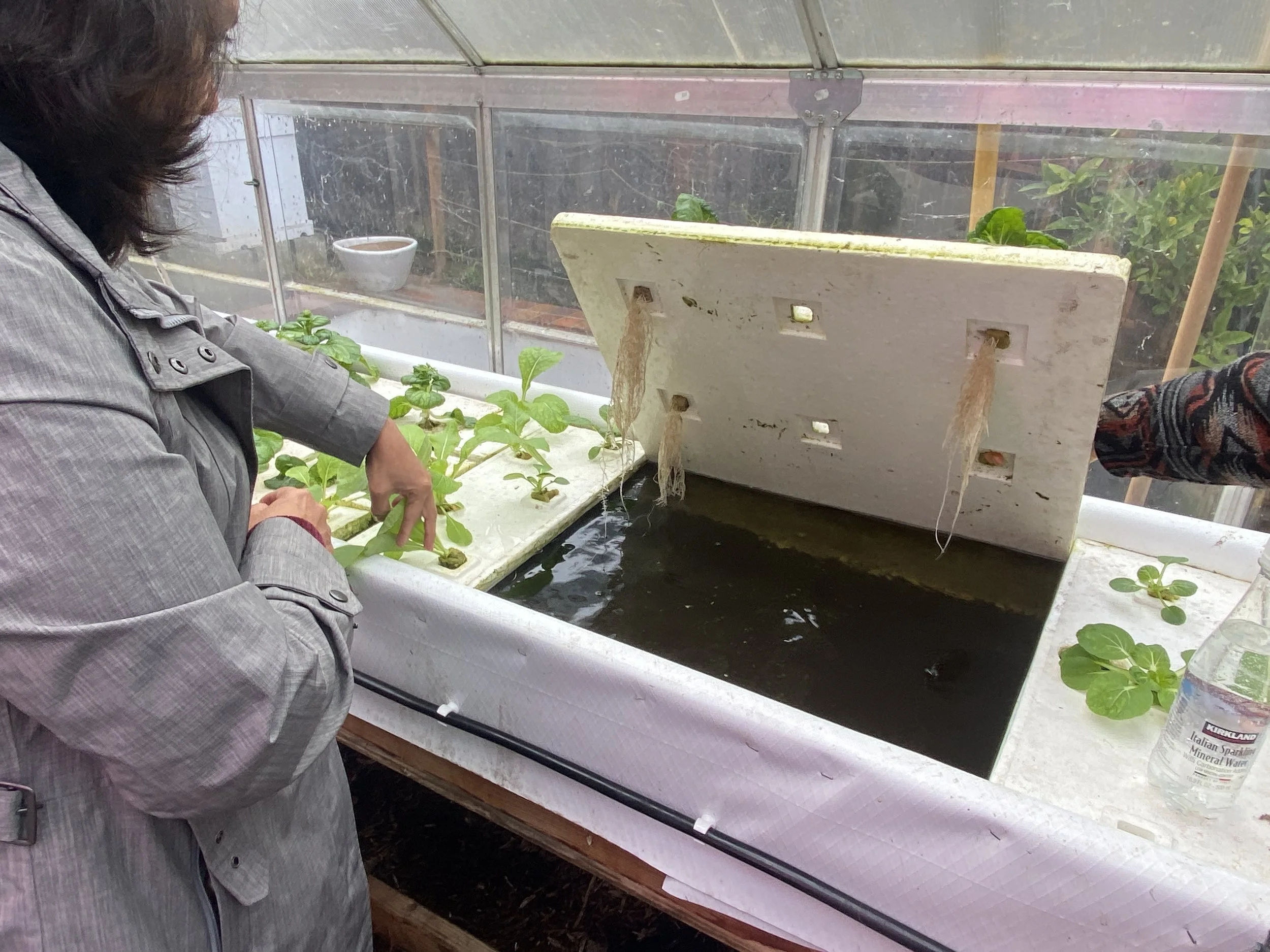What is Aquaponics?
Aquaponics is a style of gardening that combines aquaculture (raising fish) and hydroponics (growing plants without soil).
How does it work?
Aquaponics is a soil-less gardening system that harnesses nitrogen-fixing bacteria commonly found in soil to convert fish waste to plant-available nutrients. Plant roots, growing media, and filtration methods purify the water for the fish. Water is recirculated constantly throughout the system and losses are limited to evapotranspiration and filter backwash.
Why try Aquaponics?
Aquaponics reduces water consumption for plant and fish production and produces a high yield year-round in a small area. Weeding is not needed and there is a lower risk of pests and disease compared to soil-based gardening.
Plants are continuously fed with water and nutrients and all plants and fish are supplied with oxygen. If you’re growing tilapia or other edible fish, you can raise them sustainably.
Systems can be built to your needs and should take into account access to repurposable parts, hip-height ergonomics, light exposure, desired plant/fish yield, and more.
“Hi, my name is Ahmed Alhafidh and I am glad to show you my aquaponics garden, which I have been maintaining for over six years. In the image above you can see a raised grow bed holding dill, brussel sprouts, lettuce, and cilantro. Below you can see an overview of the full system, including a fish tank, sump tank, bubble bead filter, grow beds, air pump, and germinator bucket. The system is housed in an 8’ x 12’ greenhouse.
How do I get started?
An aquaponics system minimally requires a plant growing bed, a fish tank, a pump, a filtration method, and plumbing parts. At first, a system requires a few weeks of circulating before nitrogen-fixing bacteria begin to colonize. Once they do, your system is ready to sustain fish and vegetables!
How do I use and maintain a system?
Once it’s setup, an aquaponics system requires minimal maintenance. On a daily basis, fish must be fed to ensure fish and plants receive proper nutrition (this can be done by an automatic fish feeder). Regular visual inspection of the system is recommended to ensure there are no leaks. Weekly maintenance involves topping off water, germinating seeds, and cleaning the filter. Monthly maintenance involves culling roots, testing pH, and supplementing nutrients as needed.
Interested in Building an Aquaponics System?
Please contact us if you would like to purchase a small-scale DIY aquaponics kit or if you are interested in installing a larger system. If you have an existing pond with fish, you can integrate grow beds and a pump to easily create an aquaponics system. For more info, please feel free to send an email to ahmed@smartyardseducation.org.
Interested in learning more?
Come to a Hands-on Aquaponics Workshop
2025 Workshop Schedule Coming Soon!
Our 4-hr workshops consist of an overview of aquaponics concepts followed by a medium-scale system demonstration and hands-on DIY component. Below is an outline of topics covered:
Benefits of Aquaponics
Water efficiency and minimal waste
Organic-friendly approach without chemical pesticides
Dual production (fish and vegetables) in limited spaces
Key Biological Processes
Nitrification (ammonia → nitrite → nitrate)
Nutrient delivery in aquaponics vs. traditional soil
System Components & Flow
Fish tank, mechanical filter, biofilter, grow beds, sump tank, pumps, and aeration
Typical water flow patterns within an aquaponics setup
Types of Aquaponics Systems
Nutrient Film Technique (NFT)
Media Bed (e.g., expanded clay)
Deep Water Culture (DWC) with submerged roots
Filtration & Water Quality
Mechanical and biological filtration requirements
Regular water testing (pH, dissolved oxygen, ammonia, nitrite, nitrate)
Balancing the System
Matching fish feed levels to plant needs
Calculating fish load and growing area
Nitrogen cycling process and start-up timelines
Fish Selection & Care
Common edible (tilapia, trout, perch) and ornamental species (koi, goldfish)
Feeding practices, stocking density, and temperature considerations
Design Considerations & Getting Started
Space, sunlight, and structural requirements
Planning system type, filtration needs, and potential repurposed parts
Rule-of-thumb guidelines for flow rates and tank-to-plant ratios









